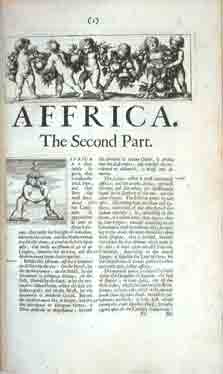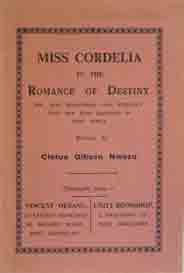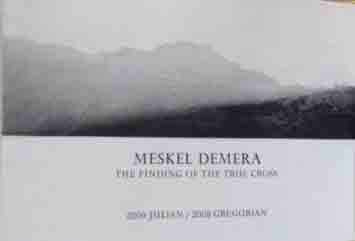
Special materials such as rare books and unique manuscripts are housed in Smathers Library (East), a short walk from Library West via covered colonnade. Digital reproductions may be available online via UF Digital Collections (https://ufdc.ufl.edu/) and African Studies Collections (https://ufdc.ufl.edu/africa1). Users may request digital reproductions of local materials. For original manuscripts held elsewhere, ArchiveGrid is a helpful search tool.
For UF authenticated users, online collections from the British Online Archives are available (use VPN if off campus): African Blue Books, 1821-1953 and Colonial Law in Africa (1808-1919, 1920-1945, and 1946-1966). See Humanities research & primary sources for other primary resource collections online.
Contact the African Studies Curator for orientation to Smathers Libraries collections (part of UF Libraries & affiliates), for assistance with specific materials, or to arrange an individual consultation or group presentation on the many resources available onsite and online.
 A geographical description of the four parts of the world taken from the notes and workes of the famous Monsieur Sanson, geographer to the French king, and other eminent travellers and authors. To which are added the commodities, coyns, weights, and measu
by
A geographical description of the four parts of the world taken from the notes and workes of the famous Monsieur Sanson, geographer to the French king, and other eminent travellers and authors. To which are added the commodities, coyns, weights, and measu
by

These seventeenth century publications provide direct insight on how Africa and Africans were perceived by Europeans during this important time period. The view of Mombasa at the left is a detail from a map print in our collection, "Aden, Mombaza, Quiloa, Cefala" or Civitates Orbis Terrarum (1572-1618).
Books were at this time luxury goods owned only by the most wealthy, elite members of society (the introduction of the printing press in 1453 greatly increased the speed of book distribution, and according to contemporary observers dropped prices by 80 percent, but broad distribution to a wide range of readers was slow to develop). Prior to mass production of books, even examples from several hundred years ago are generally supple, easy to handle, and a pleasure to read. Note that most books were sold without boards or covers at this time period, and the current bindings weren't contemporary with their printing.
Class discussion centers on early books as luxury goods, uses for various editions, and the re-use of engraved plates (would now be considered plagiarism). Also discuss provenance and variation in bindings and paper quality, etc. Consider printing and binding expenses, artifactual value (vs. intellectual value of contents), condition, and provenance. Discuss changes in printing technology (woodcut vs. copper plate detail, durability for larger editions, resolution), contemporary knowledge of Africa by Europeans (reading the text and illustrations or cartouches for cultural-historical cues). Historical context of seventeenth century Europe (Age of Discovery, transmittal of African indigenous knowledge, trade routes, landmarks, and distances to Arab historians and European traders, etc.).
 Istorica descrizione de' tre' regni Congo, Matamba et Angola: sitvati nell'Etiopia inferiore occidentale e delle missioni apostoliche esercitateui da religiosi Capuccini.
by
Istorica descrizione de' tre' regni Congo, Matamba et Angola: sitvati nell'Etiopia inferiore occidentale e delle missioni apostoliche esercitateui da religiosi Capuccini.
by
Consider what topics and which books were popular at different time periods, how tastes changed during the nineteenth and twentieth centuries. It's also interesting to look at differences in African and other readers' tastes: who reads what, where, and when? Why? What factors influence taste in reading materials?
 Facing Mount Kenya; the tribal life of Gikuyu.
by
Facing Mount Kenya; the tribal life of Gikuyu.
by
 How to write love letters, toasts and business letters.
by
How to write love letters, toasts and business letters.
by
 Miss Cordelia in the romance of destiny: the most sensational love intricacy that has ever happened in West Africa
by
Miss Cordelia in the romance of destiny: the most sensational love intricacy that has ever happened in West Africa
by
Fine arts press books are created with special, artistic, craft-focused attention to the full range of the book arts (ink, paper, typographic design, creative writing, printing techniques, graphic design, bindings, etc.). These represent a vision of what a book can be when created as an organic whole, with full attention to the quality of every element of production. They guide readers back to the historical moment when books were created with the full devotion and attention of expert craftspeople, and which have proven to survive quite well over many centuries. At the same time they demonstrate a new vision for book production in the 21st century, reminding us that books don't have to be only a package for marketing content, but can be artifacts worthy of appreciation on their own terms. Almost no fine arts press books consider African related topics, so these examples from Khelcom represent an even smaller, super-specialized niche of an already arcane bit of the book market.
The Smathers Libraries hold a full set of Bogardus work on African topics to date: Touba-New York (2004), Meskel Demera (2008), Burake (2010), Seventeen trees (2011), Ba suri (2013), and Places of reverence (2018). To our knowledge no other library holds all (thought 35 other libraries own one or more) of these beautiful works.
 Touba - New York.
by
Touba - New York.
by
 Meskel Demera : the finding of the True Cross.
by
Meskel Demera : the finding of the True Cross.
by
African Studies manuscripts in our primary source collections include original or rare non-book materials (e.g. postcards, photo print albums) collected by UF faculty and others. Topics or potential uses relate to the research and teaching mission of UF's Title VI comprehensive Center for African Studies. These include African history, agriculture/economy, anthropology, Apartheid, art, colonialism, health history, language/linguistics, photographic representation, politics, wildlife conservation, and more. Use the Finding Aids search page or see “African Studies Classifications” for an overview of available manuscripts. Note: many of these collections are fully or partly available online in UFDC at African Studies Collections.
We make a wide variety of materials available for teaching and learning, research and illustration. We attempt to balance access to them with respect for the privacy and dignity of persons depicted in our collections but cannot guarantee that users can avoid being offended or disturbed. We may at times limit access to especially sensitive materials, such as those created to cater exclusively to sexual exploitation and the “colonial gaze” or depictions of violence against civilians, severe trauma, or extreme exploitation. Readers should be aware that they may encounter images of violence, disease, and poverty, along with the perspectives of these materials' creators, which at times will differ greatly from our own. Please feel free to work with the curator for assistance in selecting the most appropriate materials for your own purposes.
Reproduced archival materials that may be difficult to access in original. Archives available on microfilm include missionary society records; colonial government publications for Nigeria, Tanganyika and Zanzibar (Tanzania), Kenya, Uganda, Northern and Southern Rhodesia (Zambia and Zimbabwe), and Nyasaland (Malawi). Other large archival sets include the Bascom Yoruba collection and the Sahel Documentation Center.
Note that many other collections not listed here are available to UF users via Interlibrary Loan from the Center for Research Libraries (CRL). Please contact a librarian for assistance in requests for CRL film sets; as institutional members, our users have the right to borrow large sets of microfilm for extended periods of time in order to pursue specialized research with these materials.
In some cases, online guides are available for assistance in working with these large, sometimes complex, materials. For example, see these guides for the CMS records, as well as the guides to the series of colonial government records titled "Government publications relating to African countries prior to independence" (see links from individual countries listed above).
 Reality. [Pietermaritzburg, South Africa].
by
Reality. [Pietermaritzburg, South Africa].
by
“Onitsha Market literature” can be identified by using this phrase in the catalog or online.
Additional sources for information on Onitsha Market Literature:
If you're looking for photo archives of Africa, I highly recommend ILISSAfrica's Guide to historical photographs from Africa on the web. The guide covers a great deal of resources.

|
